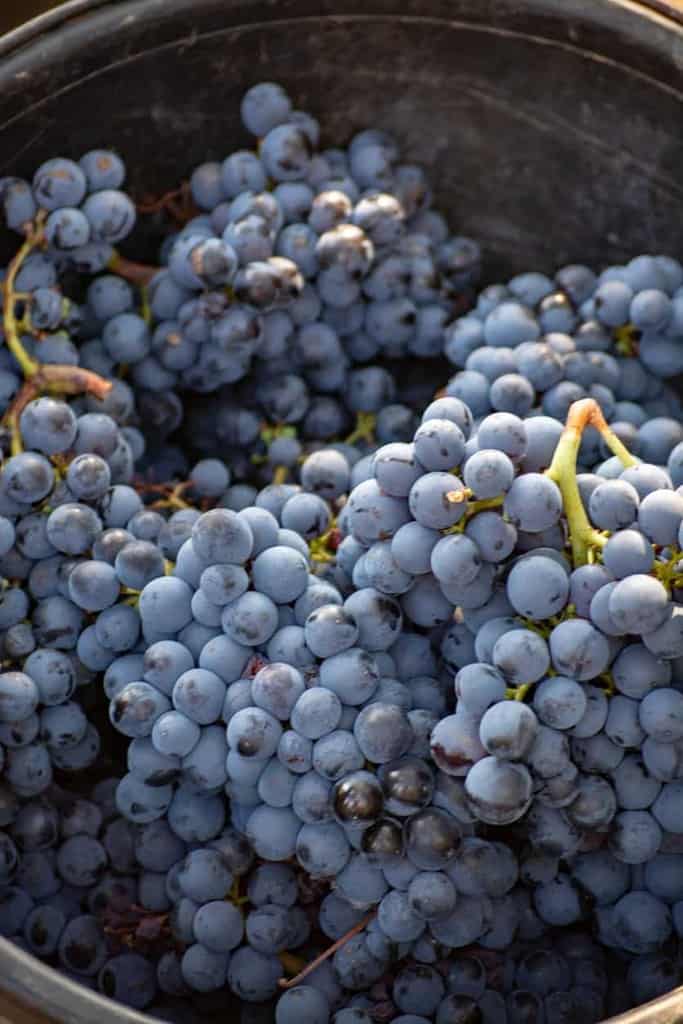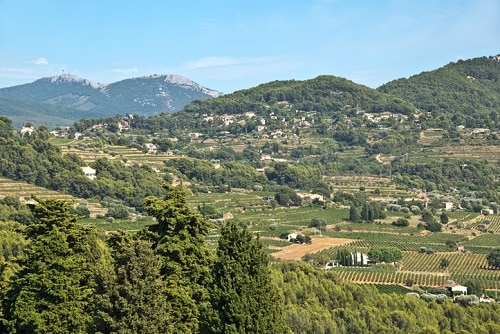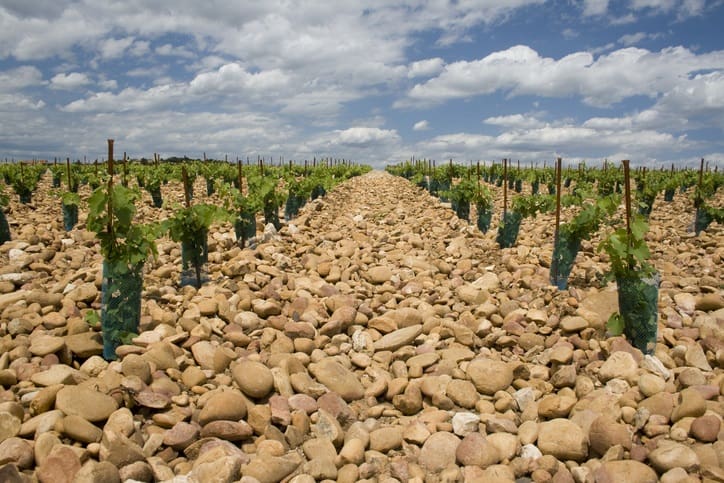Mourvèdre Grape Variety Characteristics & Wine Profile
Last Updated on August 21, 2022.
Mourvèdre, also known as Monastrell, originated in Spain and is thought to have been brought to the region by the Phoenicians in the 1st century BCE. While the grape is not as well known as a standalone varietal, it is popular for blending in wines from regions like Châteauneuf du Pape in Rhône. This is due in part to the grape often producing wine that is fairly tannic and high in alcohol.
The Tasting Notes of Mourvèdre
Mourvèdre prefers very warm weather and adequate water to produce wines that show what this grape can really do. When done well, wines can exhibit flavors reminiscent of red berries, farmyard, wild game, earthy notes and red fruit. If grown in less than appropriate conditions, the wine can become jammy and overly herbaceous.
Care is required when growing and producing Mourvèdre. The grape grows in tight, compact clusters that make it susceptible to disease and mildew. To prevent the wine from becoming weak and overly herbaceous, it needs to be picked when sugar levels are slightly higher, though too high can lead to higher alcohol. These wines are also prone to oxidation and reductive flavors if care is not taken during the winemaking process.
Wine Growing Regions for Mourvèdre
The grape thrives in Spain, where it is known as Monastrell and, until recently, was the fourth most commonly planted red grape varietal. It is widely planted in Eastern Spain, and is one of the primary grapes in the regions of Jumilla, Yecla, Valencia, Almansa and Alicante. It is often blended with Grenache or Cinsault to soften the tannins and intense perfume flavors.
In France, Mourvèdre is grown mainly in the Southern Rhone, where it is consistently warm and can thrive in the heart. In classics like Châteauneuf-du-Pape, herbaceous and spicy Mourvèdre is used to add weight and structure to a blend of Grenache, Syrah and Cinsault.
While Spain has been removing plantings of Mourvèdre to grow more Chardonnay and Cabernet Sauvignon, France is increasing the use of the grape both as a single varietal and blending grape. In Bandol, an appellation located in Southeast France in Provence, Mourvèdre is king. Many have come to associate this region as being the pinnacle of Mourvèdre production. The appellation requires that red wines include at least 50% of the grape, which adds spicy and earthy characteristics.
In the United States, Mourvèdre is grown in hotter areas of California and Washington State, though it is also planted in Arizona, Missouri, New Mexico, Texas and Virginia. These United States styles are less tannic, medium bodied, and have increased wild-game and spice notes. It is often used in Rhone-style blends, and rarely is seen as a standalone. It is used in a similar way in Australia, in GSM style blends, and may also be used to create cask and fortified wines.
Mourvèdre Wines & Blends to Try
- Domaine Tempier Bandol Rouge is a great place to start your Mourvèdre tasting, as Bandol is known for this grape in particular. It’s everything you’d expect from a Mourvèdre dominated wine: spicy, earthy, gamey, with a complement of herbal, chocolate and red fruit notes.
- As a comparison, Barahonda Monastrell is a 100% Mourvèdre, and has fascinating notes of smoke and licorice. This winery produces a numbers of quality levels, from an affordable option to some that are more expensive yet complex and age-worthy.
- Another blend option that is worth trying — if you’re ready to splurge — is any Châteauneuf-du-Pape. Domaine de la Janasse and Domaine le Clos du Caillou are some of the top producers. If you’re looking for something a little more affordable, try a Minervois, we love Gerard Bertrand’s.
- Want to try an Arizona Mourvedre? Rune Wines is producing one that is bright with red plum and raspberry, earthy and gamey, with a hint of smoked meat. It’s both classic and unique.
Learn About These Other Grape Varieties
Written By Kate Meyers Emery
Kate Meyers Emery is a Finger Lakes wine evangelist, sharing the love and knowledge of her region through the classes she teaches and in her writing. She is the author of VinifeROC, a personal chronicle of her adventures in exploring the wines of New York, with a particular focus on Rochester and the Finger Lakes. Follow her wine adventures on Instagram at @kmeyersemery.
Fruit & Earth
Red berries, farmyard, wild game, earthy notes and red fruit. Sometimes hints of smoke or flint are detectable in Mourvèdre-based wines.
The Structure and Style of Mourvèdre Wines
Body Medium - Full
Sugar Dry
Acid Medium - Medium Plus
Alcohol High
Tannin High


